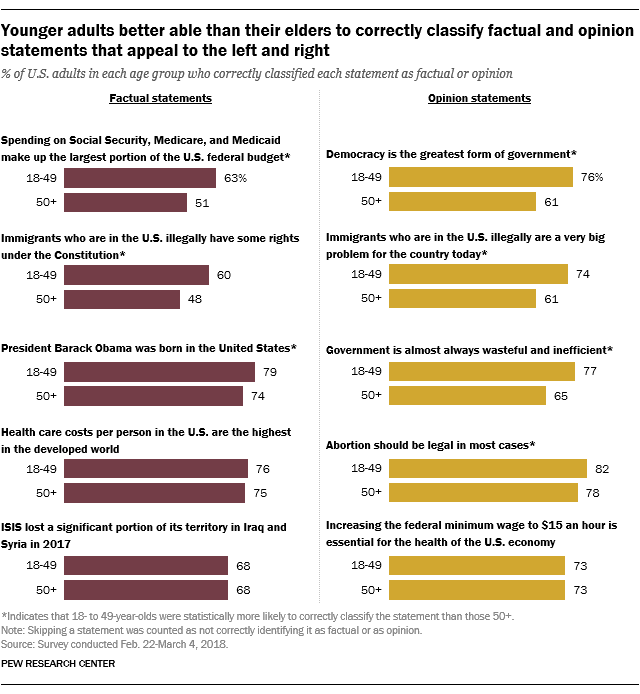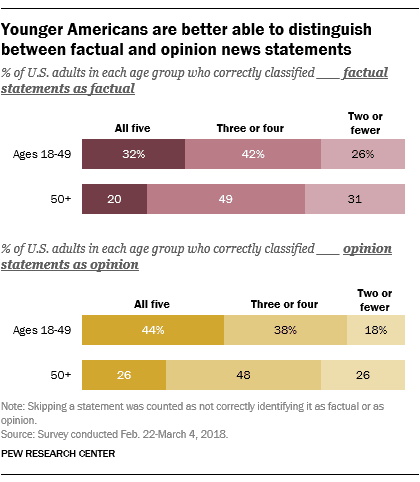A new survey published by the Pew Center will probably stir a lot of spirits: the recent data shows that younger Americans are better than their older countrymen at separating factual statements from opinions. This is a crucial ability in a post-truth world where “fake news” is a prevalent problem.

There are very few good news about this particular report. As previous efforts have already shown, Americans aren’t particularly good at separating facts from opinions. When given ten statements (five facts and five opinions), only a quarter of study participants were able to accurately classify all five factual statements (26%) and about a third could classify all five opinion statements (35%). However, results weren’t uniform across all age groups: a third of 18 to 49-year-olds (32%) correctly identified all five of the factual statements. The same could only be said about 26% of people aged 50 and older.
Notably, the younger generations’ ability doesn’t seem to be connected with a political affiliation. A particularly interesting result was observed in the two following statements:
“Government is almost always wasteful and inefficient”
“Abortion should be legal in most cases”
The first statement was correctly identified as an opinion and not a fact by 77% of the younger people, and 65% of older people. Scores were 82% vs. 78%, respectively for the second statement.

The reason why these two statements stand out is that the first one appeals to the right part of the political spectrum, whereas the second one appeals to the left — so here, the combined results suggest that it’s not a problem of bias, and indeed represents a (slightly) higher ability.
It’s not clear exactly what leads to this difference. Younger Americans also are more “digitally savvy” than their elders, which is extremely useful in identifying “good” news sources. This seems like a very reasonable cause, but Pew notes that even when correcting for levels of digital savviness and party affiliation, the differences by age persist.
Pew also noted that splitting the “young” age group into two smaller groups (18 to 29-year-olds and 30 to 49-year-olds) doesn’t make a significant difference. The two groups were equally able to correctly categorize all five factual and all five opinion statements, and both outpaced those in the two older age groups (50- to 64-year-olds and those ages 65 and older).
If you want to test your ability to correctly separate fact from opinion, take this quiz.



